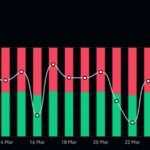(Reuters) – An out-of-control sales culture, a defensive boss obsessed with stamping out negative views about her division and a group chief executive who called her “the best banker in America” were to blame for Wells Fargo & Co’s devastating sales scandal, an internal investigation found.The probe into how the San Francisco-based bank could have allowed abusive sales practices to fester for years at its branch network laid most of the blame on the former head of the retail division, Carrie Tolstedt, and some of her management team, in a report released to media on Monday.In the report, which was carried out by the bank’s chairman Stephan Sanger and three other independent directors, Tolstedt is blamed for ignoring the systemic nature of the problem which was pinned instead on individual wrongdoers and accused of obstructing the board’s efforts to get to the bottom of what was going on.John Stumpf, the CEO who retired under pressure from the scandal in October, was criticized for failing to grasp the gravity of the sales practice abuses and their impact on the bank.In the 110-page report, Stumpf was described as blinded by Wells Fargo’s cross-selling success. He refused to believe the model was seriously impaired and was full of admiration for Tolstedt, with whom he had a long working relationship. According to one director, Stumpf praised Tolstedt as the “best banker in America.”The report said Tolstedt hid the scale of the misconduct from the board, which only discovered that 5,300 staff had been fired for opening more than 2 million unauthorized accounts when the bank reached a $185 million settlement with regulators in September last year.On the advice of her lawyers, Tolstedt declined to be interviewed for the investigation.Lawyers for Tolstedt and Stumpf did not immediately respond to requests for comment from Reuters on Monday morning.Wells Fargo said Tolstedt had been fired for cause and would be forfeiting her outstanding stock options with an approximate value of $47.3 million.Wells Fargo said it had decided to claw back approximately $28 million of Stumpf’s bonus, which was paid in March 2016.In total, the bank has fired five senior retail bank executives, including Tolstedt, over the scandal and has imposed forfeitures, clawbacks and compensation adjustments on senior leaders totaling more than $180 million, including $69 million from Stumpf and $67 million from Tolstedt.Since the scandal broke, the bank has seen a steady decline in the number of consumers opening checking and credit card accounts and has lost its status as America’s most valuable bank by market value. THE BOARDSanger, a board member since 2003, is under pressure to assure investors and regulators that he is rooting out the bank’s problems after a welter of criticism that the board did not do enough despite knowing about the problem since 2014.According to the report, multiple board members felt misled by a presentation by Tolstedt and others to the board’s risk committee in May 2015. The board members said they left thinking that between 200 and 300 employees had been fired for sales practice abuses and the problem was largely concentrated in southern California.Last week, influential proxy adviser Institutional Shareholder Services recommended investors vote to replace the majority of directors at Wells Fargo, including Sanger and the other three independent directors, at its April 25 annual meeting.The U.S. Justice Department, meanwhile, is investigating whether executives hid details from the company board and regulators as the problem grew over the years, people familiar with the matter have told Reuters. U.S. Attorney offices in San Francisco and Charlotte, North Carolina, are investigating.The report criticized the board for not centralizing the risk functions at the bank earlier, not requesting more detailed reports from management and not insisting Stumpf get rid of Tolstedt sooner.Tim Sloan, who replaced Stumpf as CEO, is described in the report as having little contact with sales practices at the bank before becoming chief operating officer and Tolstedt’s boss in November 2015. Six months later he told her to step aside.Since the scandal broke, the bank has ended sales targets, changed pay incentives for branch staff, separated the role of chairman and CEO and hired new directors to its board. A NOTEWORTHY RISKA big part of Wells Fargo’s problem was its decentralized business model, which meant the retail bank was able to keep inquiries from head office at arm’s length and there was no joined-up effort by either the bank’s human resources or legal divisions to track and analyze the scale of the problem.As far back as 2002, Wells Fargo’s retail bank was taking steps to deal with sales practice violations and in 2004, a report by the bank’s Internal Investigations division recommended eliminating sales goals for employees.That report was sent to, among others, the chief auditor, a senior in-house employment lawyer, retail bank HR personnel and the head of sales & service development in the retail bank. No action was taken.Externally, Wells was lauded by investors for its ability to cross-sell individual customers multiple products and for its squeaky-clean reputation relative to peers following the financial crisis.Internally, the sales pressure was oppressive, particularly in California and Arizona, where senior bankers sometimes called subordinates several times a day to check in and chastise those who failed to meet sales objectives.A sales push, dubbed “Jump into January”, encouraged bankers to make lists of friends and family who were potential sales targets. Staff turnover usually increased that month.Sales practices were identified as a “noteworthy risk” to the board and its risk committee, of which Sanger was a member, after a series of stories in the Los Angeles Times detailed some of the sales practices.But Tolstedt was left to deal with the issue and was “notoriously resistant to outside intervention and oversight” the report said.Tolstedt was also perceived as having the support of Stumpf, who was seen not seen as someone to raise problems with.”Stumpf was ultimately responsible for enterprise risk management at Wells Fargo, but was not perceived within Wells Fargo as someone who wanted to hear bad news or deal with conflict.” (Reporting by Carmel Crimmins; Editing by Muralikumar Anantharaman and Meredith Mazzilli)
















